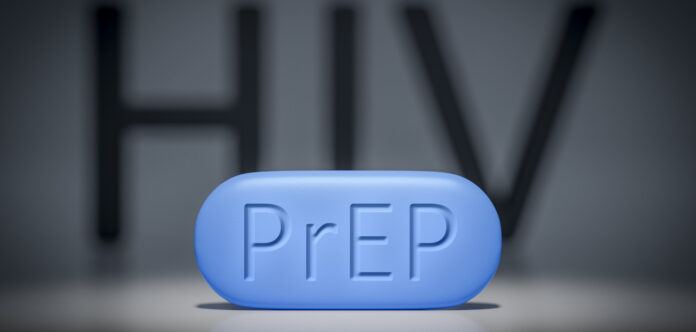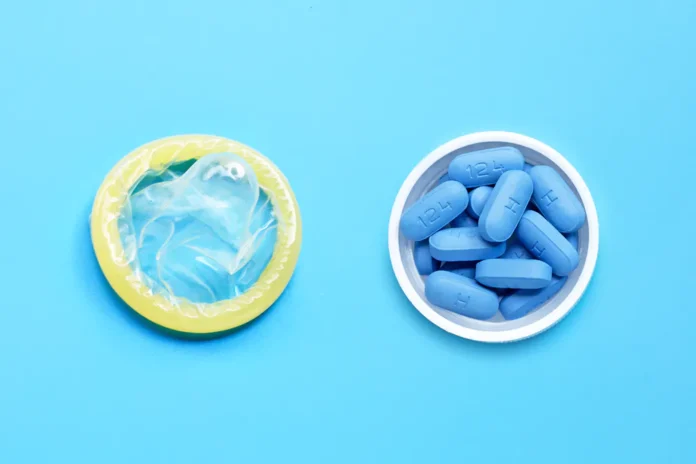Being a groundbreaking HIV prevention strategy, Pre-Exposure Prophylaxis (PrEP) involves using antiretroviral medication that reduces the risk of HIV transmission in individuals at high risk of contracting the virus. PrEP typically consists of a combination of two antiretroviral drugs, most commonly known as Truvada or Descovy.
PrEP creates a protective barrier in the body that prevents HIV from establishing a permanent infection. PrEP, when used consistently and as directed, is incredibly effective at reducing the risk of HIV transmission, especially among high-risk groups.
The Recommended PrEP Regimen and Timing

For maximum effectiveness, PrEP is usually taken as a once-daily pill. Adherence to the daily regimen is crucial to maintaining continuous protection against HIV transmission. Consistent dosing ensures sufficient drug levels to create a protective barrier.
The effectiveness of PrEP relies heavily on regular usage of the medication. Missing doses or deviating from the prescribed dosing schedule can compromise its protective benefits. Taking Pre-Exposure Prophylaxis as a healthcare provider directs is essential to ensure its efficacy.
PrEP does not provide immediate protection against HIV transmission. It takes time for the drug levels to reach a point where the body is adequately shielded from the virus. The window period varies, but studies suggest that it can take up to seven days of consistent daily use for PrEP to offer optimal protection.
In high-risk situations, such as potential exposure to HIV during sexual activity, individuals may opt for emergency or “on-demand” PrEP. This approach involves taking it within 24 hours before anticipated sexual activity and continuing dosing after the move. However, it is essential to note that this method may not provide the same level of protection as the standard once-daily regimen.
In emergencies where rapid HIV prevention is crucial, consulting a healthcare provider is vital.
Seeking guidance from healthcare providers ensures tailored advice, considering your unique risk factors and medical background.
For PrEP to effectively prevent HIV, it is crucial to use it consistently and correctly. Let’s explore the key factors that impact PrEP’s efficacy. Taking the drug daily, as prescribed, is essential to maintain the protective barrier against HIV transmission. In emergencies, consulting a healthcare provider is advised to determine the most suitable approach for adequate protection. By following medical advice and maintaining consistency, individuals can harness the full potential of PrEP in safeguarding their sexual health.
The Importance of Consistency for Maximum Effectiveness
Achieving maximum PrEP effectiveness is all about staying consistent. Take your medication as directed daily to maintain adequate antiretroviral drug levels in your system. Let’s delve into the importance of adherence for optimal protection against HIV. This consistency is essential for creating and maintaining the protective barrier that prevents HIV from establishing an infection.
Missing doses or irregular use can significantly impact its effectiveness. If doses are skipped, there may not be enough medication in the body to provide adequate protection against HIV. In such cases, the risk of acquiring the virus increases, especially during periods of potential exposure.
To maximize PrEP’s protective benefits, it is crucial to establish a routine for taking the medication. Incorporating it into daily habits, such as taking it simultaneously or associating it with other regular activities, can help ensure consistency.
If you find adhering to the daily regimen challenging, consider setting reminders on your phone or using pill organizers to help you stay on track. Additionally, discussing any challenges with your healthcare provider can lead to finding practical solutions and support to maintain consistent usage.
The Window Period: How Long Does it Take to Become Effective?

PrEP does not provide immediate protection against HIV transmission. It takes time for the antiretroviral drugs to reach sufficient levels in the body to create a protective barrier. This period, known as the “window period,” varies based on individual factors, such as metabolism and medication adherence.
Most individuals should take PrEP daily for at least seven days before expecting complete protection during potential HIV exposure. During this time, the body accumulates the necessary drug levels to block HIV transmission effectively.
It is important to remember that the window period may be longer for some individuals, particularly for receptive anal intercourse, where it can take up to 20 days for PrEP to offer optimal protection.
In the beginning, while starting PrEP, it’s recommended to use extra protection like condoms during sex. This dual approach enhances your safety against HIV transmission. Let’s explore this crucial phase of PrEP usage together. This double protection approach ensures you are safeguarded against HIV transmission while waiting for PrEP to become fully effective.
Understanding the window period is essential for making informed decisions about when to engage in high-risk activities and when to rely solely on it for protection. Consulting with a healthcare provider can provide personalized guidance on the most appropriate timing for full effectiveness and additional protective measures during this period. By being proactive and consistent with use, you can harness its full potential in reducing the risk of HIV transmission and maintaining your sexual health.
Emergency or “On-Demand” PrEP: Can it be Effective within 24 Hours?
In high-risk situations like unprotected sex with a partner of unknown HIV status or condom mishaps, “on-demand” PrEP can be considered. It provides extra protection when you need it the most. Let’s delve deeper into this emergency approach to PrEP. This approach involves taking this medication before and after potential exposure to HIV rather than following the daily regimen.
The dosage timing is crucial for “on-demand” PrEP to be effective.
The ideal dosing plan for “on-demand” involves taking two pills 2 to 24 hours before sex, one pill 24 hours later, and another 48 hours later. This intelligent approach ensures adequate drug levels during potential HIV exposure, providing you with added protection when you need it most.
However, it is essential to remember that “on-demand” PrEP is not as effective as daily PrEP in providing continuous protection against HIV transmission. It is designed for specific high-risk situations and should not replace the daily regimen for individuals engaging in regular high-risk activities.
Consultation with a Healthcare Provider for Personalized Advice on Effective Usage in Emergency Situations

Deciding on the most appropriate HIV prevention strategy, including “on-demand” PrEP, requires consultation with a healthcare provider. Your healthcare provider understands your health needs, risk factors, and sexual activity patterns, making them the best resource for personalized advice.
During your consultation, openly discuss any potential high-risk situations and concerns you may have. Your healthcare provider will assess the suitability of “on-demand” PrEP for your specific circumstances and guide the proper dosing schedule.
Moreover, your healthcare provider can address any questions or misconceptions about PrEP, ensuring you have the information to make an informed decision. They can also review the potential side effects of PrEP and address any other health concerns you may have.
Remember, your sexual health is a crucial aspect of your overall well-being, and seeking professional advice from a healthcare provider empowers you to make the best decisions for your needs.
Conclusion: Consistent Use is Key for Maximum Efficacy. Consultation with a Healthcare Provider is Advised
PrEP is a highly effective tool for HIV prevention when used consistently and as prescribed. The recommended daily regimen provides continuous protection against HIV transmission, reducing the risk of acquiring the virus through sexual activity.
To ensure PrEP’s maximum efficacy, it is essential to adhere to the dosing schedule and take the medication daily. Consistency is vital in creating and maintaining the protective barrier that prevents HIV from establishing an infection.
While “on-demand” PrEP can be effective in certain high-risk situations, it is not a substitute for daily PrEP in providing continuous protection. “On-demand” PrEP is designed for specific circumstances and should be used accordingly.
Consider the importance of consulting a healthcare provider to find the right plan. They’ll assess your risk factors, provide personalized advice, and address your concerns, empowering you to make informed decisions about usage. Consistency is critical to maximizing PrEP’s effectiveness in reducing HIV transmission and safeguarding sexual health. Prioritize your well-being and take proactive measures to stay safe and healthy. Your health matters, and you can embrace a future without worry with the proper guidance.









